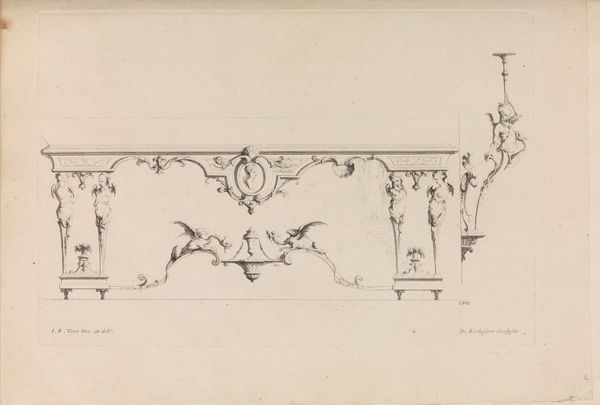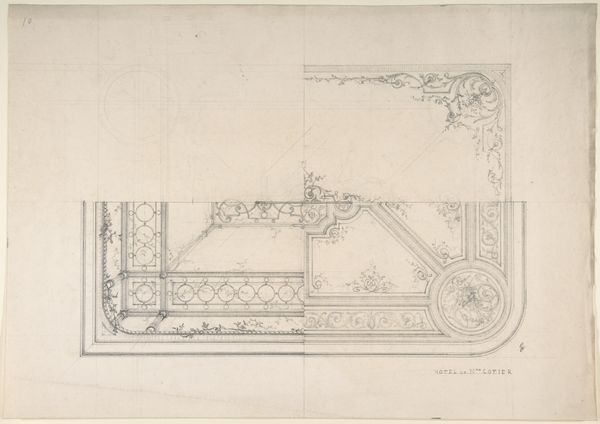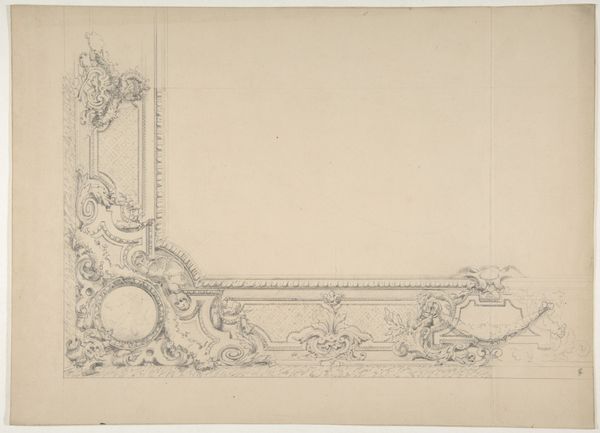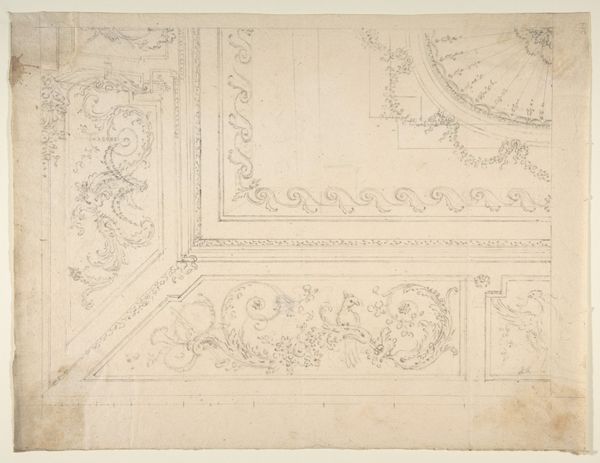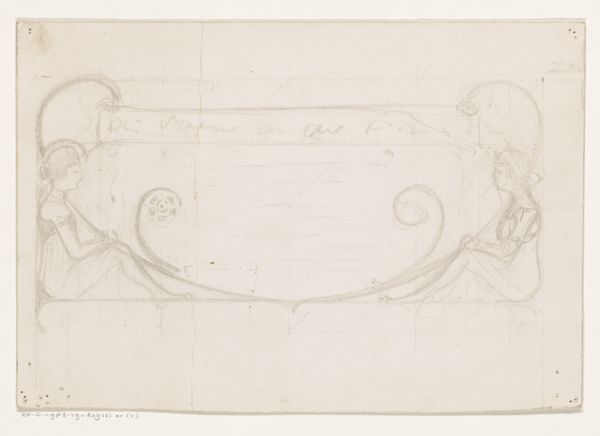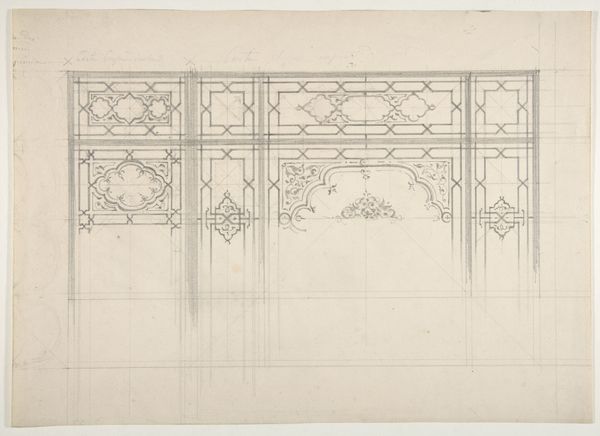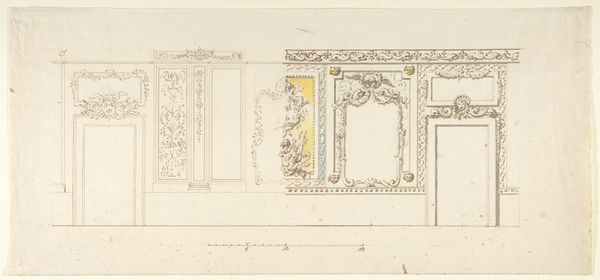
Design for the decoration of a wiling with strapwork and rinceaux 1830 - 1897
0:00
0:00
Dimensions: Overall: 10 9/16 x 14 15/16 in. (26.9 x 37.9 cm)
Copyright: Public Domain
Editor: This drawing, titled "Design for the decoration of a wiling with strapwork and rinceaux," is attributed to Jules-Edmond-Charles Lachaise and was created sometime between 1830 and 1897. It is a pencil and ink drawing on paper. I find the intricate details and the rigid structure somewhat contradictory. How do you interpret this work? Curator: Considering Lachaise’s background and the prevalence of Neoclassicism, this design embodies more than just surface decoration; it reflects societal power structures. The meticulous rendering and formal elements point to an era grappling with ideas of order and control. How does this imposed order interact with the decorative elements in shaping a vision of cultural identity? Editor: So, you're saying it is less about pretty design and more about establishing order? Curator: Exactly! Neoclassicism revived classical ideals, aligning artistic expression with social and political agendas. These refined forms were ways of subtly broadcasting and normalizing power, creating visual statements that impacted our understanding of community and collective experience. How did gender roles, race, or socioeconomic class factor into how the home was decorated? Editor: I never thought of decorative art as being an instrument of power! Curator: Absolutely! Art like this becomes an agent shaping perspectives. If we don't understand this, how can we confront and critique such visual narratives, paving the way for more inclusive spaces? Editor: It makes me think twice about seemingly innocent decorations in historical buildings. Curator: Precisely. We need to keep asking: Whose stories are being told, and whose are being silenced in these spaces? By investigating further we encourage discussion on privilege and power in what surrounds us daily. Editor: Thank you. That sheds a new light on how I interpret art and society!
Comments
No comments
Be the first to comment and join the conversation on the ultimate creative platform.
